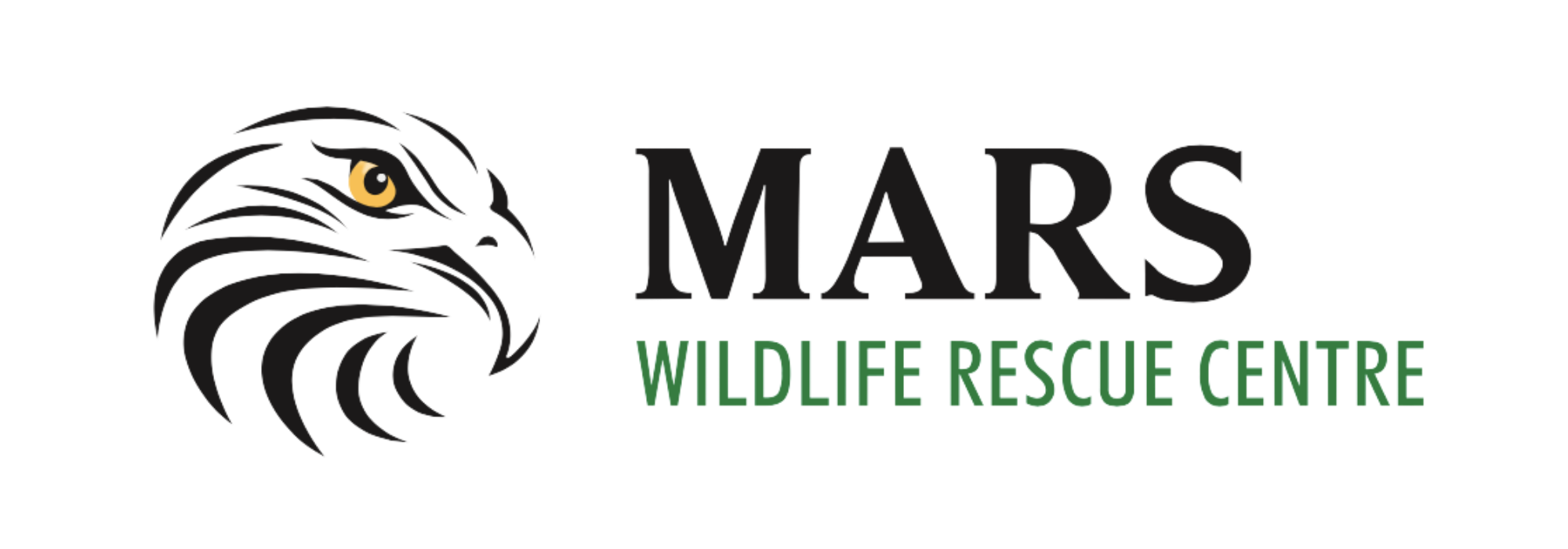MARS Moment
by Sandy Fairfield, MARS Education Coordinator
On April 22nd, during our “Walk for Wildlife” we had an urgent call from an eye witness to rescue a bird that had just “fallen from the sky”. Two bald eagles were performing their aerial acrobatics above the Courtenay ambulance station over the river when all of a sudden another bird, described as a hawk, flew in between the eagles; a move that almost turned out to be a fatal mistake. The male eagle immediately broke contact with its mate and attacked the “hawk” slashing out with its talons, knocking the hawk out of the air onto the ground. Quick thinking by Nigel Chapman, an eye witness who remembered that we had our walk in progress, saved this bird’s life.
The rescue was captured on tape by Dean Stoltz of CHEK T.V., who just happened to be taping a news item about M.A.R.S. at the air park. The “hawk” turned out to be a very beautiful osprey, a bird that is rarely seen as a patient at the wildlife center; in fact the last time we cared for one was in 2004. These birds are found worldwide with the exception of Antarctica, and are usually found along the shorelines of oceans, rivers and lakes. Unique in many ways they are the sole member of a family of birds known as “Pandion”, and are often called “fish eagles”, “sea hawks” or “fish hawks”. Ospreys do migrate in the winter mainly due to the fact that 99% of their diet consists of fish which tend to swim deeper in the winter months and cannot be accessed by the birds.
On first appearance the osprey does resemble a hawk in size but once it spreads its wings a much larger bird is revealed. These raptors sport a six foot wingspan with exceptionally long flight feathers; these feathers are different from other raptors’ as they are very brittle and are prone to breaking off at the tips. The brittle feathers are a result of the stiff inflexible oil that is produced for preening, this oil is necessary for waterproofing the birds feathers as they submerge under water while capturing prey. Long wings give them the ability to hover over the water when zeroing in on unsuspecting prey.
Often ospreys are mistaken for hawks or immature bald eagles, but up close there is no question of their identity, they have white undersides to their bodies and wings, their upper wings and bodies are dark brown, their white heads have very distinctive black eye stripes and the head and facial feathers can be drawn forward. Unlike any other raptor their method of hunting also makes them unique, they will plunge feet first into the water submerging their entire body before emerging out of the water. Talons are “dinner catchers” for the osprey and their talons are razor sharp and their grip is one of the most powerful I have ever felt; the combination of strength and sharpness allows them to carry prey for quite a distance. In order to ease the wind resistance when transporting prey back to the nest or roost, ospreys are equipped with a reversible talon that enables them to reposition and carry a fish head first, rather than across the body. Another key component to their fishing prowess is their eyesight. Due to their fishing methods they have the added problem of distortion and refraction caused by the water; not only must they judge the speed and depth of the prey, they also have to contend with the water currents and the wind speed. They have both telescopic and binocular vision and their eyesight is eight times more powerful than ours, they do not have the bony “sun-shades” above their eyes like eagles and in addition their nostrils are soft oval slits that can be closed upon impact with the water.
Ospreys have slender, hooked beaks and are much daintier eaters than eagles, taking much longer to enjoy their meal. This makes them more vulnerable to “pirates” such as crows, ravens and eagles that will blatantly try and steal their food. An osprey has a much larger crop (food pouch) than other raptors as fish does not contain as many fat calories as meat and is more easily digested, this allows the crop to store more fish but it also requires the bird to hunt longer.
Ospreys prefer to make their nests in very open areas, locally they can be seen on the Comox Lake, along the river and estuaries and they have adopted man made platforms in Sunnydale Golf Course. The Osprey recued by M.A.R.S. sustained a deep gash in its upper chest from the eagles’ talon, fortunately X-rays revealed no major organs were involved and the wound was cleaned and sutured. Ospreys do very poorly in captivity due to their feeding habits; they will also damage their long flight feathers and struggle to keep their waterproofing. It is hoped that the osprey will make a speedy recovery and will be released having learned a hard lesson, not to tangle with eagles in the future. Thanks again to all those who supported and sponsored the walk we raised over $2,600.00 for wildlife rehabilitation. To report injured or abandoned wildlife, please call 1-800-304-9968, for all other calls, 250-337-2021.

